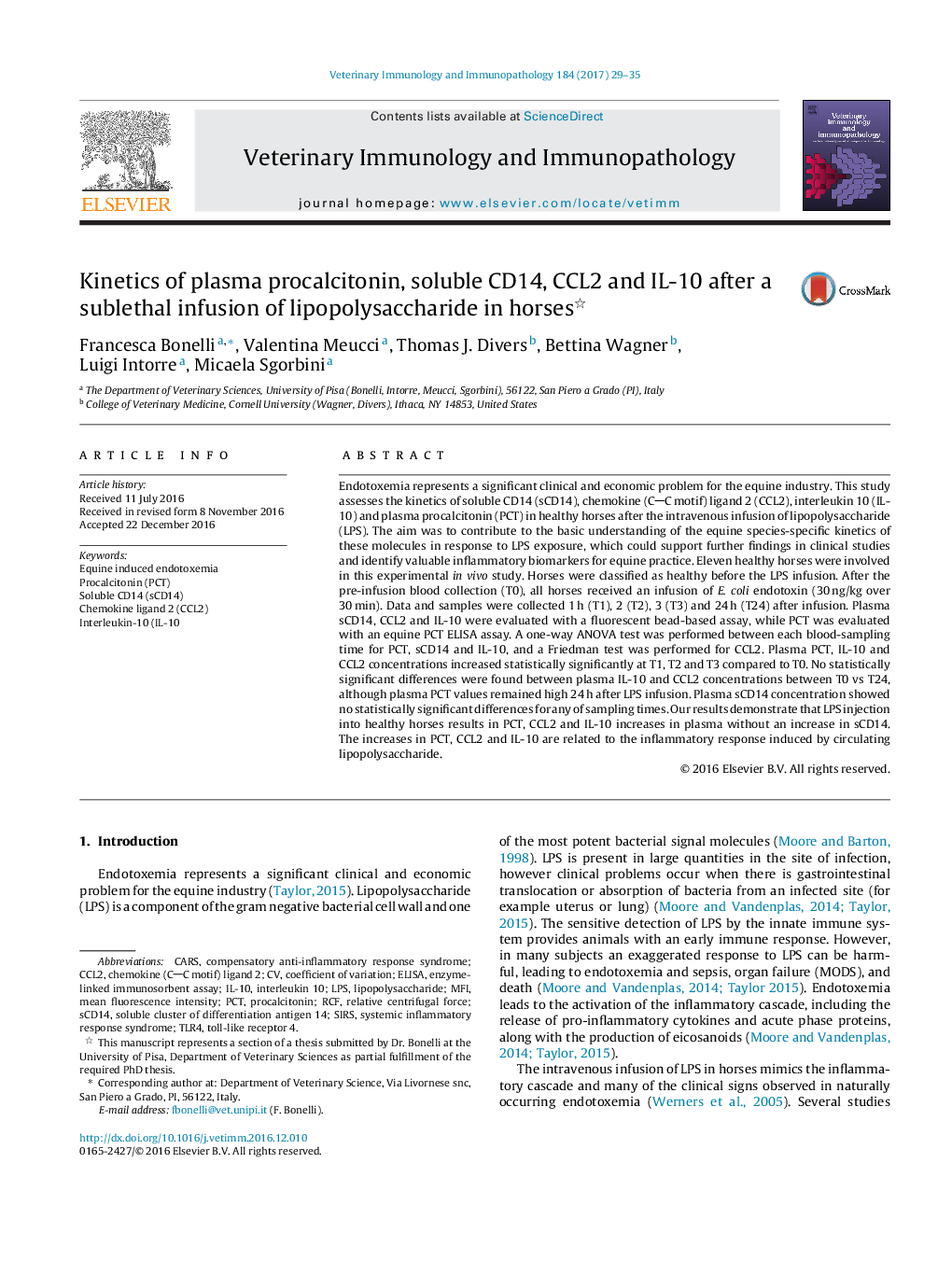| Article ID | Journal | Published Year | Pages | File Type |
|---|---|---|---|---|
| 5544738 | Veterinary Immunology and Immunopathology | 2017 | 7 Pages |
â¢Plasma PCT, sCD14, CCL2 and IL10 kinetics were assessed in 11 healthy horses after LPS infusion.â¢PCT was assessed with an ELISA assay while sCD14, CCL2 and IL10 were assessed with a fluorescent bead-based assay.â¢Plasma PCT, IL-10 and CCL2 concentrations increased statistically after LPS infusion.â¢Plasma sCD14 concentration showed no statistically significant differences after LPS infusion.â¢Increases in PCT, CCL2 and IL10 are likely to be related to the inflammatory response induced by LPS.
Endotoxemia represents a significant clinical and economic problem for the equine industry. This study assesses the kinetics of soluble CD14 (sCD14), chemokine (CC motif) ligand 2 (CCL2), interleukin 10 (IL-10) and plasma procalcitonin (PCT) in healthy horses after the intravenous infusion of lipopolysaccharide (LPS). The aim was to contribute to the basic understanding of the equine species-specific kinetics of these molecules in response to LPS exposure, which could support further findings in clinical studies and identify valuable inflammatory biomarkers for equine practice. Eleven healthy horses were involved in this experimental in vivo study. Horses were classified as healthy before the LPS infusion. After the pre-infusion blood collection (T0), all horses received an infusion of E. coli endotoxin (30Â ng/kg over 30Â min). Data and samples were collected 1Â h (T1), 2 (T2), 3 (T3) and 24Â h (T24) after infusion. Plasma sCD14, CCL2 and IL-10 were evaluated with a fluorescent bead-based assay, while PCT was evaluated with an equine PCT ELISA assay. A one-way ANOVA test was performed between each blood-sampling time for PCT, sCD14 and IL-10, and a Friedman test was performed for CCL2. Plasma PCT, IL-10 and CCL2 concentrations increased statistically significantly at T1, T2 and T3 compared to T0. No statistically significant differences were found between plasma IL-10 and CCL2 concentrations between T0 vs T24, although plasma PCT values remained high 24Â h after LPS infusion. Plasma sCD14 concentration showed no statistically significant differences for any of sampling times. Our results demonstrate that LPS injection into healthy horses results in PCT, CCL2 and IL-10 increases in plasma without an increase in sCD14. The increases in PCT, CCL2 and IL-10 are related to the inflammatory response induced by circulating lipopolysaccharide.
